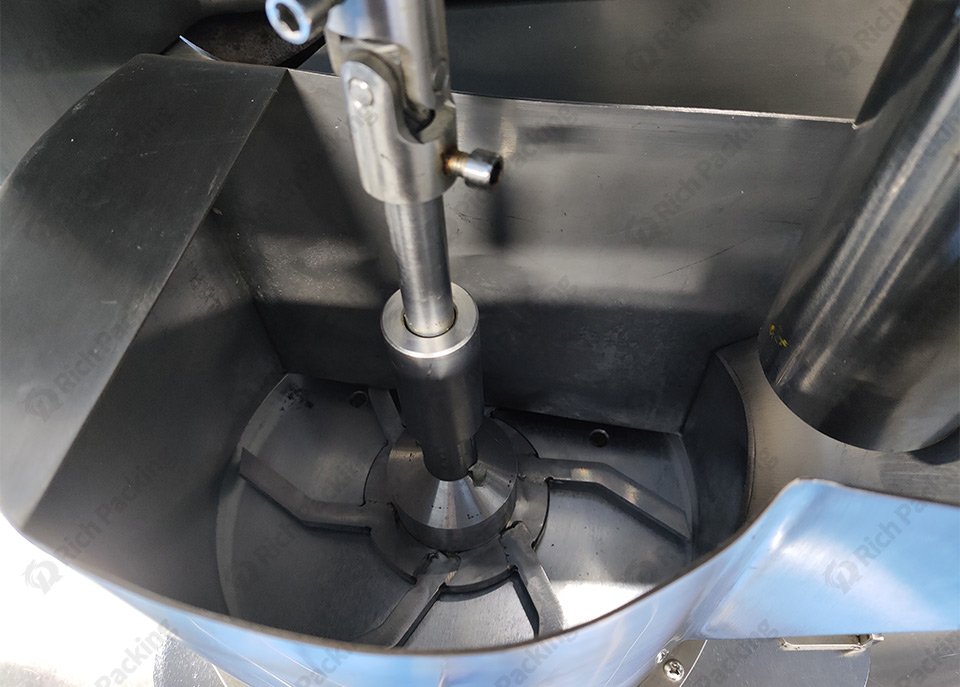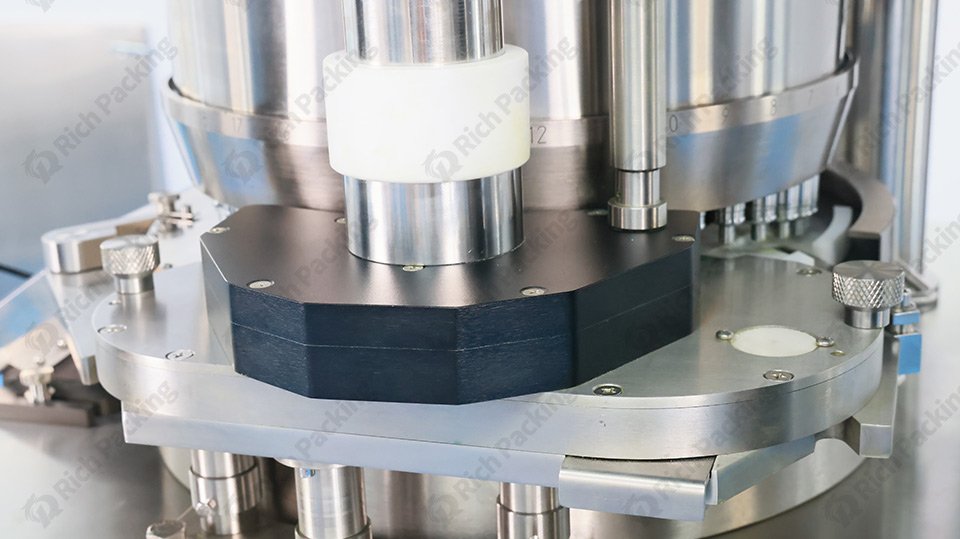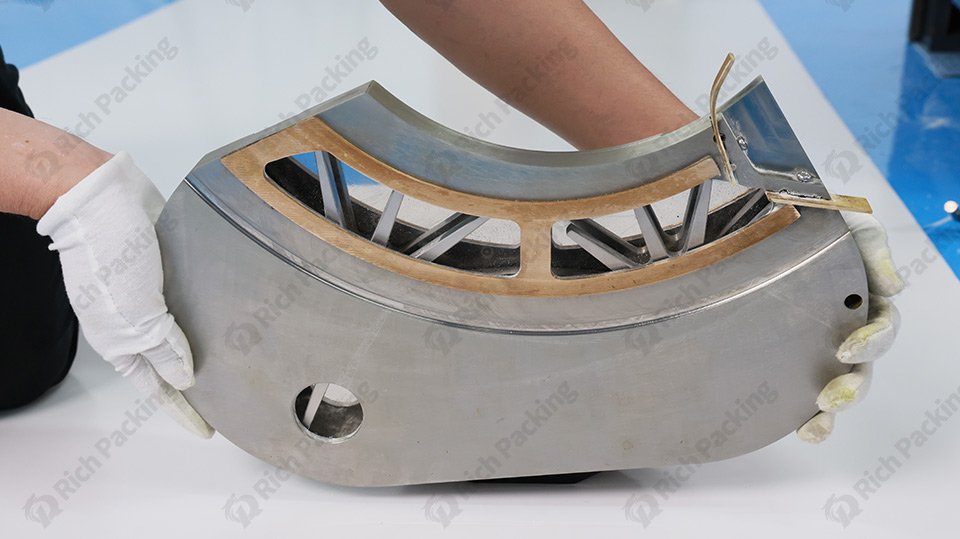Таблеточные прессы являются незаменимым оборудованием в фармацевтической, пищевой и химической промышленности, в основном используемым для прессования порошков или гранулированных материалов в таблетки. Способ подачи играет решающую роль в работе таблеточного пресса, напрямую влияя на качество и эффективность производства таблеток. В данной статье подробно рассматриваются различные способы подачи таблеточных прессов и их применение, что помогает читателям лучше понять и выбрать подходящий способ подачи.
Метод подачи – это способ подачи материалов из бункера в таблеточную форму. В зависимости от характеристик материалов и производственных требований в таблеточных прессах используются различные методы подачи. Наиболее распространённые методы подачи подразделяются на гравитационную и принудительную.
Гравитационная подача — один из наиболее распространённых методов подачи. Её основной принцип заключается в использовании силы тяжести для направления материалов из бункера непосредственно в таблеточную форму. Этот метод подходит для порошков и гранулированных материалов с хорошей текучестью.

Простая структура: Оборудование гравитационной подачи имеет сравнительно простую конструкцию, что облегчает его обслуживание.
Низкая стоимость: Благодаря простоте оборудования затраты на производство и обслуживание невелики, что делает его пригодным для мелко- и среднесерийного производства.
Простота эксплуатации: Процесс эксплуатации прост и не требует сложных систем управления.
Требование высокой текучести: Гравитационная подача требует материалов с хорошими характеристиками текучести и не подходит для материалов с плохой текучестью.
Восприимчивость к факторам окружающей среды: Процесс кормления легко подвергается влиянию факторов окружающей среды (таких как влажность и температура), что может привести к неравномерному кормлению.
Гравитационная подача подходит для материалов с хорошей текучестью, таких как некоторые фармацевтические порошки и гранулированные пищевые продукты. В этих случаях гравитационная подача обеспечивает равномерное поступление материалов в форму, что гарантирует качество таблеток.
Принудительная подача использует механические устройства (такие как шнеки, роторы и т. д.) для подачи материалов в таблеточную форму. Этот метод подходит для материалов с низкой текучестью и обеспечивает равномерную подачу, повышая эффективность производства и качество продукции.

Шнековая подача
Винтовая подача использует вращающийся шнек для подачи материалов в форму. Подходит для высоковязких или плохо сыпучих материалов. Скорость вращения и угол наклона шнека можно регулировать в соответствии с различными требованиями к подаче материала.
Роторная подача
Роторная подача использует вращающийся ротор для равномерного распределения материалов в форме. Подходит для крупнозернистых материалов. Конструкция ротора предотвращает комкование материалов в процессе подачи, сохраняя равномерность.
Вибрационная подача
Вибрационная подача использует вибрационное устройство для обеспечения равномерной подачи материалов. Подходит для материалов, склонных к комкованию. Частоту и амплитуду вибрации можно регулировать для обеспечения равномерности подачи.

Широкая применимость: Принудительная подача подходит для различных материалов с плохой текучестью и практически не зависит от характеристик материала.
Равномерное кормление: Механическое усилие обеспечивает равномерную подачу, что делает его пригодным для высокоточного производства.
Высокая эффективность производства: Принудительное кормление может значительно повысить эффективность производства и сократить отходы материала в процессе кормления.
Сложная структура: Оборудование для принудительного кормления имеет относительно сложную конструкцию, что приводит к более высоким затратам на техническое обслуживание.
Высокое потребление энергии: Из-за необходимости механического привода принудительное кормление потребляет больше энергии.
Эксплуатационная сложность : Эксплуатация и обслуживание требуют определенного уровня технических знаний.
Принудительная подача широко применяется для различных материалов с низкой текучестью, таких как некоторые высоковязкие фармацевтические порошки, гранулы и пищевые добавки. В этих случаях принудительная подача обеспечивает равномерное распределение, повышая качество продукции и эффективность производства.
1. Подходящие материалы
Гравитационная подача: Подходит для материалов с хорошей текучестью, таких как порошки и гранулы.
Принудительное кормление: Подходит для материалов с плохой текучестью, таких как высоковязкие порошки и гранулы.
Гравитационная подача: Оборудование имеет простую конструкцию и легко в обслуживании.
Принудительное кормление: Оборудование имеет сложную конструкцию, что приводит к более высоким затратам на техническое обслуживание.
Гравитационная подача: Низкие затраты на производство и обслуживание, подходит для мелко- и среднесерийного производства.
Принудительное кормление: Более высокие затраты на производство и обслуживание, подходит для крупномасштабного производства.
Гравитационная подача: Равномерность кормления относительно низкая и легко подвергается влиянию факторов окружающей среды.
Принудительное кормление: Равномерность подачи выше, что делает его пригодным для высокоточного производства.
Различные материалы обладают разными текучими свойствами, вязкостью и размером частиц. При выборе способа подачи важно всесторонне учитывать характеристики материала. Материалы с хорошей текучестью можно подавать гравитационным способом, в то время как материалы с плохой текучестью лучше подходят для принудительной подачи.
Масштаб производства и стоимость также играют решающую роль при выборе метода подачи. Для мелкосерийного и среднего производства более подходящими являются простая конструкция и низкая стоимость гравитационного оборудования. Для крупносерийного производства более выгодны высокая эффективность и точность принудительного оборудования.
В производственных процессах с высокими требованиями к качеству продукции равномерность и точность подачи имеют решающее значение. Благодаря лучшей равномерности и точности принудительная подача лучше подходит для производства высококачественной продукции.
1. Интеллектуальное управление
С развитием технологий применение интеллектуального управления в методах кормления становится всё более распространённым. Датчики и автоматизированные системы управления позволяют осуществлять мониторинг и корректировку процесса кормления в режиме реального времени, повышая точность и эффективность кормления.
Защита окружающей среды и энергосбережение являются важными направлениями будущего развития методов кормления. Разработка энергосберегающего и высокоэффективного оборудования для кормления может снизить производственные затраты и минимизировать воздействие на окружающую среду.
В будущем оборудование для кормления будет больше ориентировано на многофункциональную интеграцию, объединяющую различные методы кормления в одном устройстве, что повысит его применимость и гибкость. Это позволит гибко выбирать и настраивать методы кормления в зависимости от различных производственных потребностей, повышая эффективность производства и качество продукции.